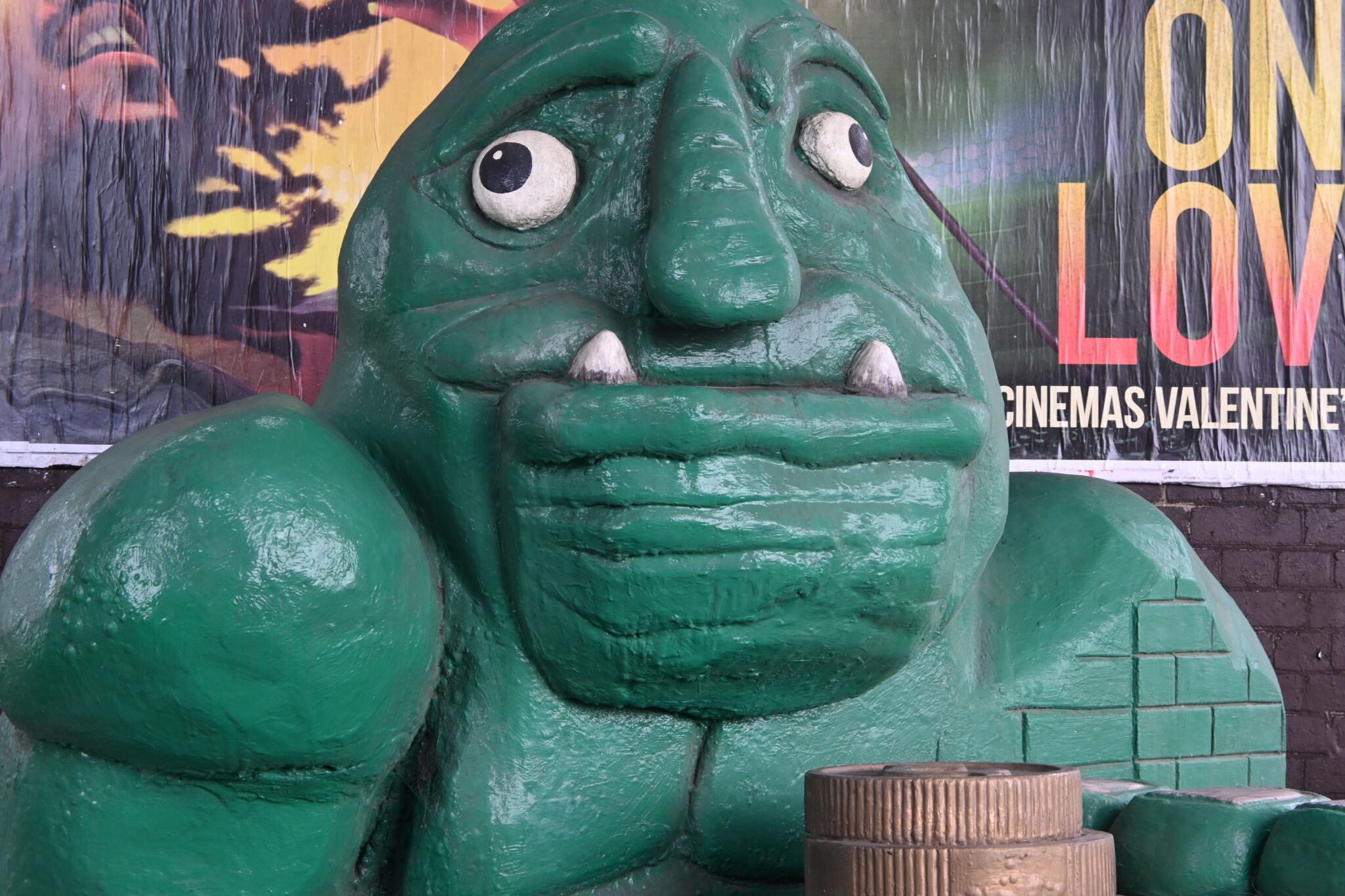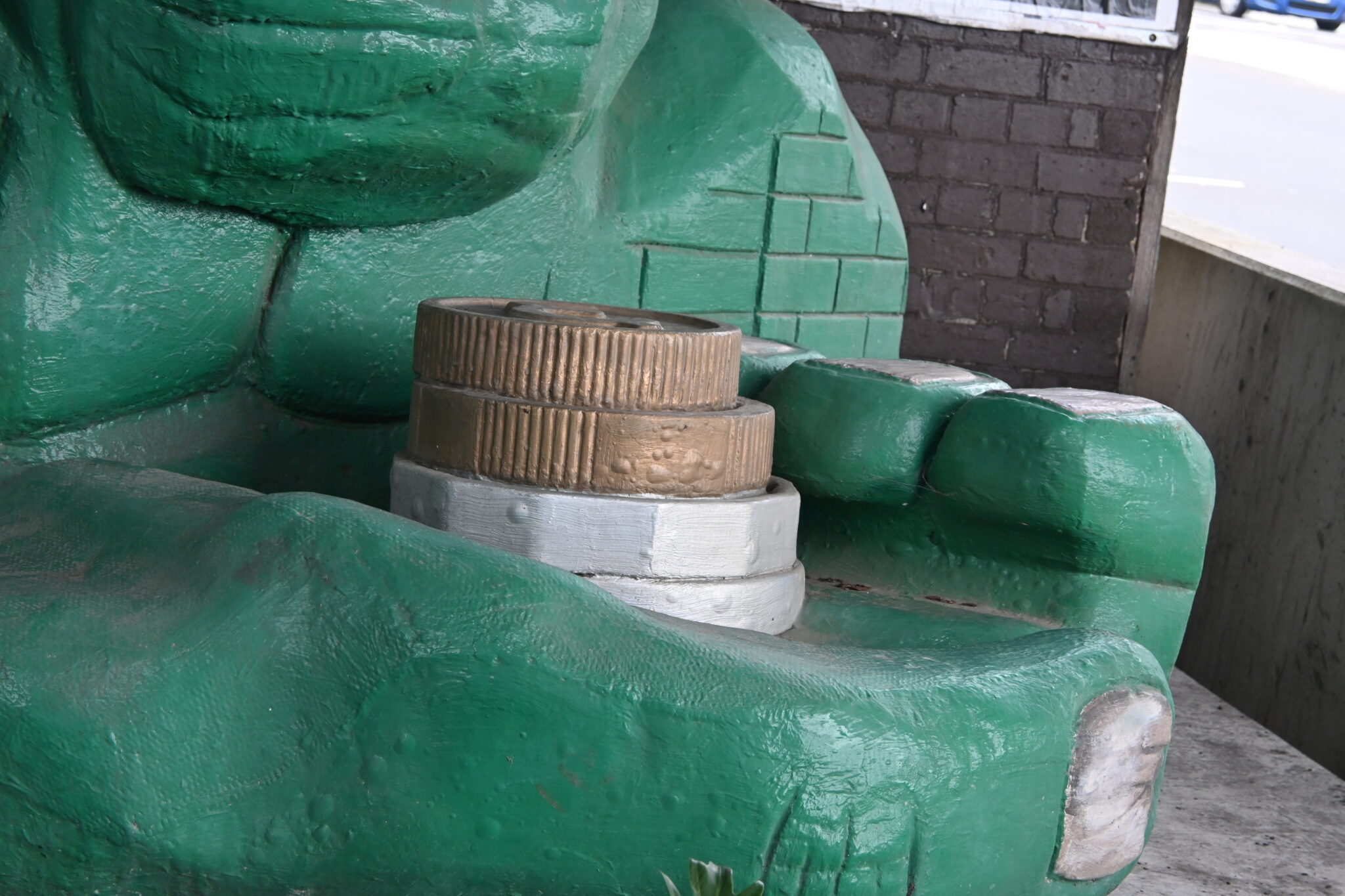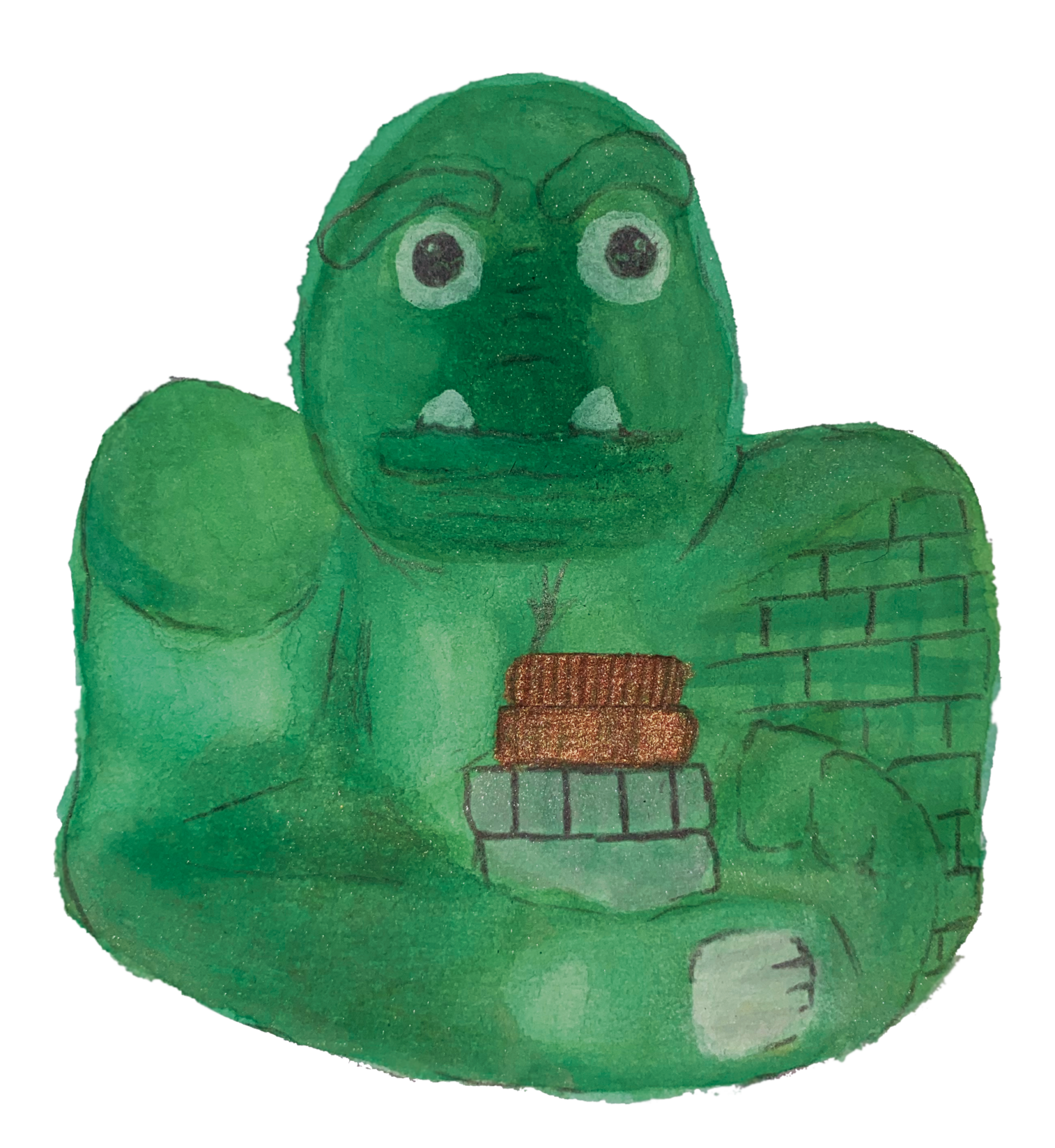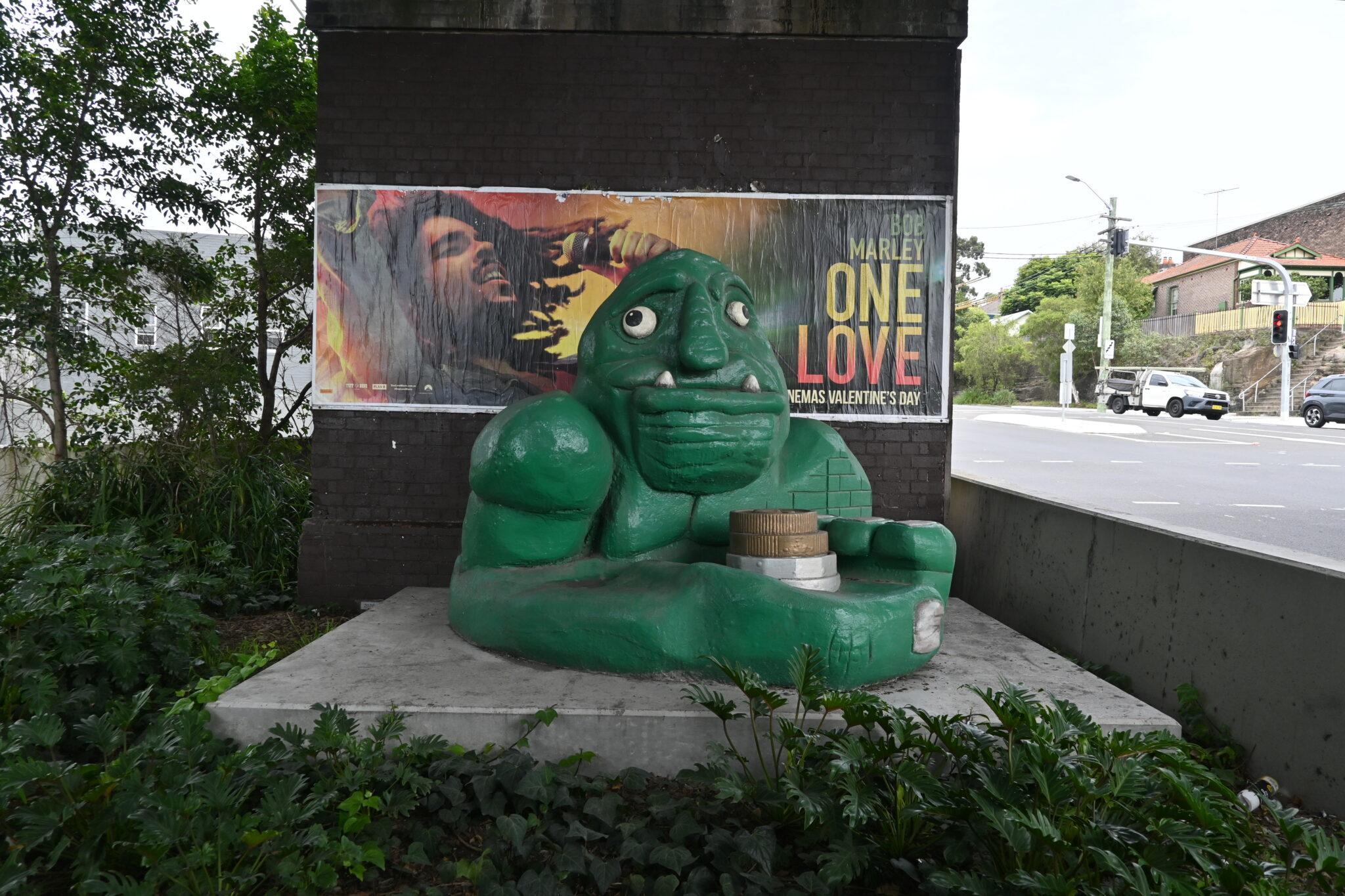At the corner of Johnson St and the Crescent sits a troll. It is sheltered between two pylons that support the bridge and light rail line above. Its concrete platform is surrounded by shrubbery and recent plantings. It was originally accompanied by a sign behind it saying “have you paid your troll?” and small coins stuck to its hand. Now, a slowly changing roster of advertisements adorn the pylons.
I have been fascinated by this troll for years.
After years of watching the troll through car windows as a child and eventually finding it as an unexpected companion on my 433 bus journeys to uni, I recently wondered why I have never tried to learn more about the troll.

I already knew the basics. It was part of a TV show called Guerrilla Gardeners that aired between 2009 and 2011. With out of the box ideas (think: giant planter pots, plants growing from cars, mini boats and wharves, metal cacti and more), bunches of plants, a green ute, and a creative cover story, the Guerrilla Gardeners transformed unused patches of city streets into usable greenspaces, without the permission of local councils or the owners of the land.
While trawling the internet for a record of this show, I stumbled upon an upload of the first six episodes on YouTube. While the majority of Season One had aired on Channel 10, it was eventually moved, with Season Two on Channel One (an early iteration of what is now known as 10 Bold) — a move that was attributed to reducing viewing numbers and the introduction of a little known cooking show called Masterchef.
There, in the title sequence, was the first reveal. One of the Guerrilla Gardeners was none other than Mickie Quick ( amongst a plethora of other fascinating things, he is one of Honi’s Publications Managers), who was dubbed their “covert ops” expert, tasked with creating each site’s cover story.
Whilst the show had received criticism for moving into communities with the budget of a Channel 10 TV show before disappearing to work on the next one, as opposed to the often local and ongoing practices of guerrilla gardeners, Mickie described how the show was effectively a kids show, despite not being marketed as such.
“Kids just love the simplistic premise of taking over a site and doing something cool, and I don’t think they question the reality of how much budget it takes to build things at that sort of scale and all that.”
This gave Mickie a unique kind of fame. A friend had once found graffiti scribbled inside a playground cubby that read “I love Mickie Quick from Guerrilla Gardeners.” A trip to a skate rink ended up with kids trying to figure out if they were really seeing the Mickie Quick that they had seen on their screens.
Since they were working without permission, the threat of councils intervening loomed overhead. Fondly remembering the creation of the fictional group “Big Things Australia” — who would, as the name suggests, do big things around Australia — Mickie described how many of the cover stories revolved around logos and signage that he could create and print.
“I really love that sort of stuff. I could see the appeal to kids that you really make yourself official with just the thinnest of logic and then a purposeful and authoritative looking design that matches that logic, and then, bang, you can kind of pretend you’re that.
“I love how that communicates to kids that you just can fake this identity to pull something off like that.”
The Troll was part of an episode set in Annandale. In the episode, Mickie is shown designing and creating the centrepiece of the garden. Mickie explains that whilst he did the majority of the designing, its creation more of a group effort, as he was “invisibly assisted by a kind of props department.”

“I knew how to jump on polystyrene hot wires and actually use it, but it was absolutely a whole team of people doing the actual work and that felt pretty weird to be pretending that I was making it when there was people in the background, and they’re friends of mine, so you could just see them being told to get out of the way while I then went in with the machinery to look like I was.”
After surviving more than a decade of visitors (both appreciative and dismissive of their new neighbour), WestConnex approached Mickie to refurbish the Troll.

The temporary disappearance of the Troll dismayed local residents. A missing poster appeared on the Annandale Troll’s Facebook page, despite signage advising that it was being refurbished. With a new colouring and coating for the Troll, along with some alterations including the addition of a pile of giant coins, the Troll was safely back home under the bridge.
“I really see the simple power and joy in it because people love it. You know you don’t have to have esoteric avant garde art for people to love. Some people just love a basic, simple thing like a troll under a bridge that their kids go up around,” said Mickie.
The only thing not allowed back? The original sign behind the Troll. WestConnex, perhaps unsurprisingly, warned that it couldn’t return. After all, the receiver of your tolls probably doesn’t want you to remind you of them.
Alongside the WestConnex development, the roads around the troll have changed. Whilst there once was a footpath along the side of the island, almost all of the island is blocked off by fencing making visits to the Troll more difficult, but not impossible.
The Annandale Troll has lived through a decade and a half of changing roads, vandalism attempts, and community care. It still lives under the bridge, peering out at the people passing by.
Which reminds me, have you paid your troll?






